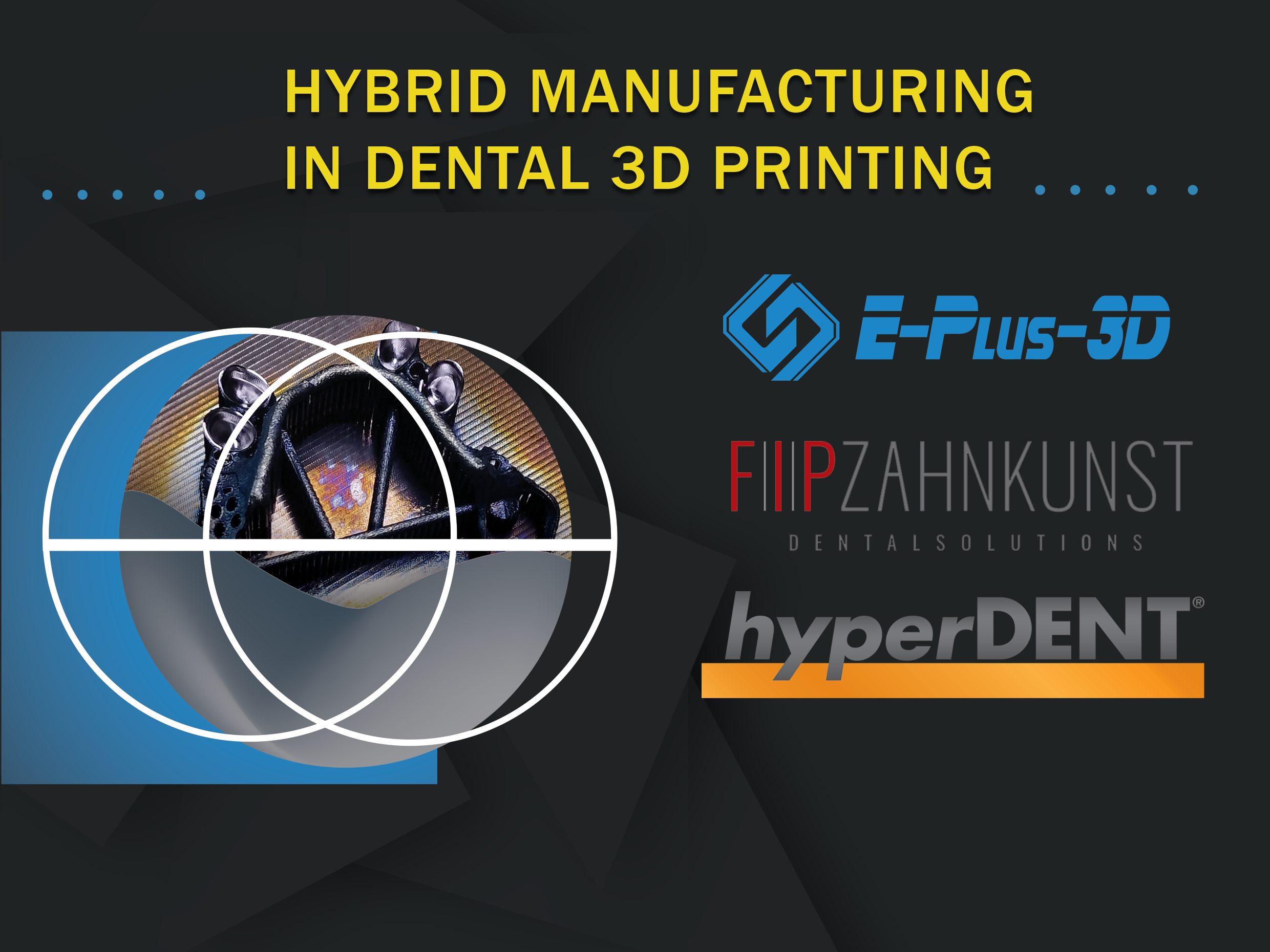The Chinese 3D printer manufacturer Eplus3D demonstrates the potential of hybrid manufacturing in the dental industry with a case study of the company FIP Zahnkunst.
This case study is going to highlight the potential of Hybrid Manufacturing in the dental industry. The dental industry is an excellent example of the need of highly customized hybrid manufacturing parts due to human individuality and companies like FIP Zahnkunst who want to produce highest quality, tailored products for their customer in the most efficient manner. FIP Zahnkunst has noticed in the past a tough labor market situation and increasing costs. With Hybrid Manufacturing, established in 2021, based on Eplus3D’s EP-M150 and all its automatization advantages, he can overcome these issues and provide best for its customers.
What is Hybrid Manufacturing
The first measures need to be taken in order to bring the physical circumstances (patient’s teeth & gum or received positive impression) into the digital world in the form of an 3D-File is to use 3D-Scanning. This is currently done by scanning devices who create a point-cloud which further on is automatically transformed into a 3D-File, usually in an STL-Format. A 3D-Scanner is nowadays already state-of-the-art equipment of most dental labs.
Based on the created scan-model, the dental technician can then design the parts which needs to be produced using a dedicated Dental CAD-Software.
How It’s Done
At the beginning of its hybrid-journey, it wasn’t hard for FIP Zahnkunst to choose a suitable CAM software, as they already had good experience using hyperDENT for their CNC-milling machine. The software hyperDENT, with its hybrid manufacturing module, covers the entire hybrid workflow through a variety of features. The software shows great compatibility with Eplus3D’s own developed hatching software EP-Hatch and features an implemented postprocessor to send the milling toolpath to customers CNC-machine. When importing the 3d-designs into the software, they are automatically checked for imperfections and healed if needed. Once the parts are healed, they need to be orientated and nested on the pre-defined printing platform of Eplus3D EP-M150 using a build plate of diameter 150 mm. During the automatic orientation and nesting process, the operator usually tries to fit as many parts as possible on the build platform, to maximize the utilization of the printer.
Then, the software is automatically recognizing the marginline/preparation boundaries set previously in the CAD design software. During this manufacturing setup in hyperDENT, the software recommends certain areas on which to add a pre-defined tool allowance of 0.2 mm. This additional material is then added onto the surfaces, which will be milled away (subtractive manufacturing) afterwards, in order to achieve the desired appearance and surface roughness. The printed parts and the milling tool paths are together nicely illustrated to doublecheck.
For FIP Zahnkunst, the integration of the hybrid process went very flawless because the milling strategy was already defined by FIP Zahnkunst when they implemented hyperDENT for the milling process only initially a few years ago.
After the slicing in hyperDENT, the dental technician will apply the metal 3d printer’s parameter strategy, which includes for example the speed and power of the laser onto the data using Eplus3D’s software EP-Hatch and then prepare the printer in order to start it. During the installation of the metal printer, these are taught well on customer site by Eplus3D’s local team of engineers in order to ensure confident and safe operation of the equipment at any time.
During the printing process, the EP-M150 works fully autonomous and does not need to be monitored. After the parts are printed layer by layer, they will be removed from the printer. Due to the “0-Positioning” clamping system inside the EP-M150, FIP Zahnkunst can clamp the printing platform precisely in its CNC machine. The parts are inserted into the machine via a pallet changer. That way, a precise positioning of the part is possible. FIP-Zahnkunst is always trying to push boundaries and to make his production as stable and precise as possible. In order to achieve the highest possible accuracy and to confirm the position of the printplate and the parts on them, 3 hollow measuring cones are printed and measured using a 3D-clock.
After the milling process has been completed, the products have to be heat treated to remove internal stresses and removed by a cutting technology. This is usually done with a band saw. FIP Zahnkunst is cutting his products off with a wire cutting machine to reduce the force which can be put into the fragile parts when using a bandsaw.
After the milling, the parts are removed using a small wire cutting machine or bandsaw. Following that the dental technician can finish the parts.
With this method of 3D printing and milling combined, sheer endless geometries with tight tolerances where needed can be produced in a cost-efficient manner by using less material and providing the user with much more flexibility during production. In the dental industry, Cobalt-Chrome alloys and Titanium alloys are widely used during this process. While the printer is precisely melting the geometry, the milling machine can mill the parts of the last job or another one.
After implementing the full workflow, there is no need to worry anymore about pricey tools or expensive raw materials. The whole data workflow after a design is made, includes around 10 minutes work and calculation efforts, all automized as much as possible, only using a few mouse-clicks.
Find out more about Eplus3D at eplus3d.com.
For more information about FIP Zahnkunst, please visit fip-zahnkunst.de.
Subscribe to our Newsletter
3DPresso is a weekly newsletter that links to the most exciting global stories from the 3D printing and additive manufacturing industry.





















